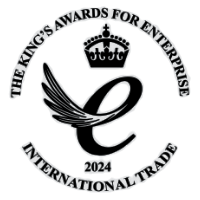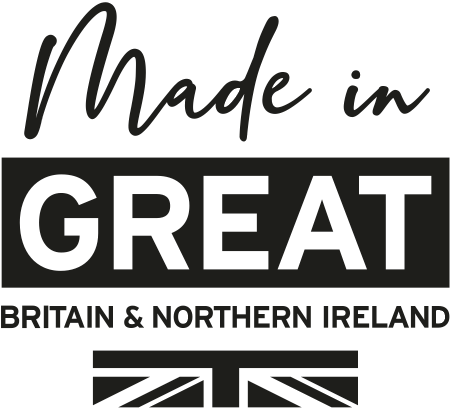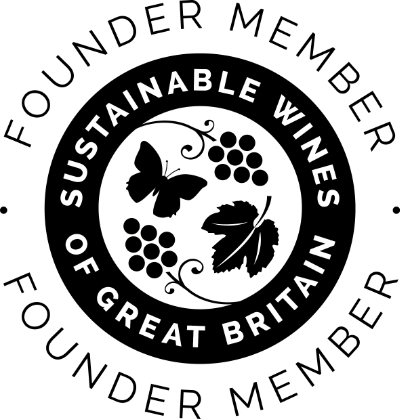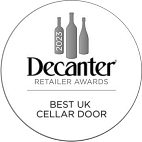British Airways’ Master of Wine, Tim Jackson MW, on bringing Gusbourne into First and Club World – and showcasing the best of British in the skies
As English wine continues its remarkable rise, British Airways is offering it a uniquely high-altitude platform. Under the guidance of Tim Jackson MW, British Airways’ Head of Wine, English sparkling now features prominently across the airline’s premium cabins. Alongside other top-tier English producers such as Nyetimber and Dermot Sugrue, from 1 July customers can enjoy Gusbourne’s prestige cuvée Fifty One Degrees North 2016 in First and Gusbourne Rosé 2019 in Club World.
We caught up with Tim to talk about how English wine is evolving, why it matters that British Airways is championing England’s leading producers in the cabin, and how the airline selects the wines it serves on board..
Tim, to begin with — can you talk us through your route to working in wine, and with British Airways?
My background was in business strategy, finance and marketing roles. But wine was always a passion. That culminated in passing my Master of Wine in 2017. At that point, I was one of 375 MWs in the world, and I thought: I should probably do something practical with this.
So, I left my previous job in 2018 and started blogging, consulting, and writing. By early 2019 I was writing for Jancis Robinson. Then in May that year, British Airways was looking for a Master of Wine to help shape the drinks strategy and programme. I joined initially as a contractor through the second half of 2019 before joining full-time in February 2022.
Tell us about your role…
I’m responsible for all complimentary drinks onboard – everything from tea and coffee in World Traveller, to Champagne and English sparkling in First. So, it’s a complete spread, and not just wine. My remit covers all drinks served onboard across all cabins.
When did you first feel ready to introduce English wine to the cabin?
Personally, I first tasted an English sparkling wine – I think it was a Nyetimber – back in the early 2000s. Either a 1998 or 2001 vintage. It showed me that the quality was already there.
At British Airways, we have been serving English sparkling wine in First for more than a decade. As the flag carrier, we always want to showcase the best of British, and what we’ve done reflects how the wine industry has developed. We first introduced English sparkling wine to our Club World cabin in 2023, which was made possible by a major shift in the English wine industry in 2018.
The 2018 vintage was two and a half times larger than the previous one, and the quality was outstanding. Suddenly we weren’t talking about three to five million bottles a year, but more than 10 million. The 2018 vintage was also superb quality, and this meant we knew we could find wines that were both excellent and available in the quantities we needed.
And how has English wine been received by customers?
In the UK there’s growing awareness: most supermarkets stock English sparkling, even if customers haven’t tasted it yet. For our customers who don’t yet know English sparkling, serving it on board presents a real opportunity to showcase it.
And the feedback is great. People say things like, “I didn’t know this existed. I tried it and it was fantastic.” That tells me we’re doing the right thing – and it shows the value of putting the product directly in front of people.
A SHOWCASE FOR THE BEST OF BRITISH
Why does British Airways offer English wines when Champagne is better known?
At British Airways, we’re a British original – we champion British originality. And wine is a part of that. Historically the UK has been a great wine-trading nation. We brought in the best wines from around the world, and our wine list still reflects that. But now we can also bring something truly British – and world class – to the table.
Our flights are a shop window for British excellence. That applies as much to whisky and gin as it does to sparkling wine. It’s a great position to be in.
ENGLISH PRESTIGE CUVÉES AT 35,000 FEET
This year you’ve brought prestige English sparkling into First Class. What changed to make that possible?
We’ve always had top-quality wines in First, including prestige Champagnes. But English sparkling has caught up. The category of prestige cuvée in England is relatively new – Nyetimber’s 1086 was the first, launched in 2018. Gusbourne’s Fifty One Degrees North followed. So, this summer, July through September, we’re pouring Fifty One Degrees North in First. Later in the year, we’ll pour the 1086 again, and then something from Sugrue South Downs is coming next.
What’s exciting is that we now have English wines that can sit right alongside prestige Champagnes – both in quality and style. And the customer reaction so far has been very positive – not just in comments, but in consumption too.
Do you have to choose wines differently, knowing they’ll be served at altitude?
Absolutely. The cabin pressure is lower, so you’ll get slightly larger bubbles in sparkling wines. You want something with real finesse on the ground – it’ll keep that elegance in the air.
More broadly, the dry cabin air dulls your sense of smell. It dries out your olfactory bulb slightly, which means you pick up fewer aromas – and therefore flavours. That applies to food as well. So we tend to look for wines that have a bit more intensity at ground level, so they still perform well in the air.
At the prestige level, those wines already have the flavour concentration and balance, as well as incredibly fine bubbles. But for example, with sparkling, a slightly higher dosage can help counterbalance acidity at altitude. So yes – we always consider how a wine will show onboard.
Tell us about your first impressions of Gusbourne…
I’ve known Gusbourne’s wines for a long time. My colleague and I bumped into Laura Rhys at 67 Pall Mall, and we had a chat there. That led to a conversation or two and from there, Gusbourne entered our formal tender process – as everyone does.
We always assess wines blind, and both Fifty One Degrees North and the Rosé stood out. The Rosé had great balance, precision, fine bubbles, intensity – everything you look for in a top-quality wine. Fifty One Degrees North had complexity, length, drive and excellent lees character. They were both clearly standout wines, even in a strong field.
What’s also great is how high the general level of quality is now. That’s a great sign for the industry overall.
THE FUTURE’S BRIGHT
What do you think the next chapter looks like for English wine?
I think there are three major themes. First, inward investment from big names like Pommery, Taittinger, Jackson Family Wines – that raises the bar and brings expertise.
Second, regional development. Areas like the Crouch Valley in Essex are ones to watch. Over time, I think we’ll get a better understanding of the different terroirs across the Southeast – but we’re still in the early days. Right now, the core challenge for the industry is simply, “England makes wine.” That has to come first, before we get into the nuances of regional expression.
Third, still wines. There are some very good English still wines. For me, nothing gets a free pass because it’s English. It has to be good. Still wines will come – but I’d say check back in five to ten years to see real development there.
Any home grown talent we should be keeping an eye on? You mentioned that you have vines in your London garden…
Yes! I’ve got Chardonnay vines and one Muscat Bleu, which is a Swiss hybrid a friend gave me.
Last “harvest”, I made exactly one glass of wine. I fermented it with EC-1118, the Champagne yeast, then put cling film over the glass and left it in the fridge. I forgot about it, and when I came back months later, it had developed a layer of flor.
Instead of oxidising, it stayed pale green. So it seems I’m now making a London Chardonnay-based Sherry. Completely absurd – but great fun.
And, lastly, a sticky subject: value. Should customers be ready to pay Champagne prices for English wine?
Serving English prestige cuvées in First is a landmark moment. It shows that these wines can take their place on a global stage alongside Champagne, with British Airways championing them every step of the way.
Where British Airways can help is by putting wines in front of people – in Club World, in First – and letting them taste side-by-side. They can compare English sparkling with Champagne, and decide for themselves. And they do. Once people taste it and experience the quality, they’re happy to back it.
And it goes further than that. There’s something wonderful about giving someone a taste of English wine on board, and them thinking, “Actually, I’d like to go visit the vineyard.” Maybe they land in London and take a trip out to Kent or Sussex. That’s a very special connection to help forge.
To plan your next flight, go to ba.com.









